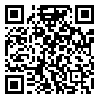Volume 1, Issue 1 (6-2024)
2024, 1(1): 0-0 |
Back to browse issues page
Download citation:
BibTeX | RIS | EndNote | Medlars | ProCite | Reference Manager | RefWorks
Send citation to:



BibTeX | RIS | EndNote | Medlars | ProCite | Reference Manager | RefWorks
Send citation to:
hajarian A. Assessing the status of creative tourism indicators and measuring its effects on urban vitality (Case study: Arak city). Geography and Tourism Planning 2024; 1 (1) : 6
URL: http://gtp.khu.ac.ir/article-1-40-en.html
URL: http://gtp.khu.ac.ir/article-1-40-en.html
university of isfahan , a.hajarian@ltr.ui.ac.ir
Abstract: (228 Views)
Nowadays, due to the explosive increase in the population of cities around the world, urban planners are looking for new solutions to overcome these problems, and one of the new concepts for reducing the problems of cities in the field of urban planning is the development of creative tourism, which has received much attention in the past few years. Therefore, the aim of the present study is to analyze the spatial relationship between creative tourism indicators and the vitality of cities in the neighborhoods of Arak city. The required data and information were collected by two methods: library and survey methods, and after analysis in EXCEL software, they were entered into GIS software and spatially analyzed using multivariate regression in the form of the GWR model. The statistical sample of the study was 384 citizens of Arak city. The results of the study showed that the status of creative tourism indicators is in an unfavorable condition and the peripheral neighborhoods of the city are in a weaker condition. Also, the vitality indicators in Arak city are not in a favorable condition, so that most neighborhoods have an average score lower than 3. Also, the results of the spatial analysis of the GWR model showed: Based on the R2 statistic, the relationship between the independent variable (creative tourism) and the dependent variable (urban vitality) in two indicators, comfort and convenience, safety and security, is 72% and 63%, respectively, and creative tourism indicators can have a high impact on the vitality of Arak city neighborhoods, especially in the eastern, southern and southwestern regions of the city. Also, the R2 statistic showed that the impact of creative tourism indicators on the dimensions, attractiveness and visual diversity, and the quality of attractiveness and visual diversity of the neighborhood vitality variable of Arak city is in an almost average position of 53%.
Article number: 6
Type of Study: Research |
Subject:
Special
Received: 2025/01/6 | Accepted: 2025/02/2 | Published: 2025/02/2
Received: 2025/01/6 | Accepted: 2025/02/2 | Published: 2025/02/2
Send email to the article author
| Rights and permissions | |
 |
This work is licensed under a Creative Commons Attribution-NonCommercial 4.0 International License. |






